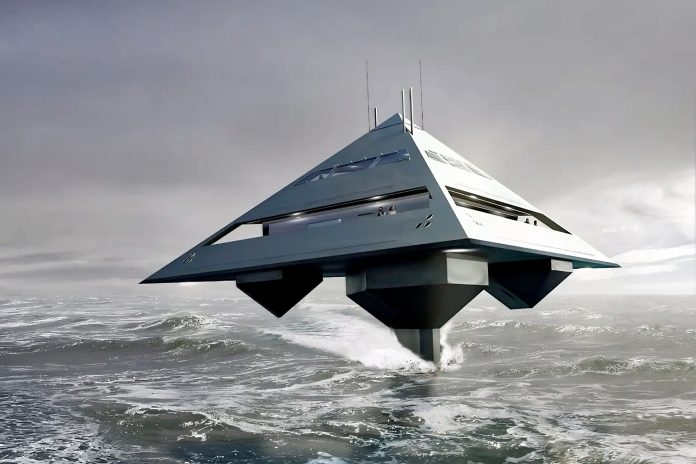In the world of ultra-luxury design, Jonathan Schwinge is a name that garners attention. Known for pushing creative boundaries across architecture, furniture design, and maritime projects, Schwinge’s designs are nothing short of daring. One of his most talked-about concepts is the Tetrahedron Hydrofoiling Superyacht, simply referred to as “Tetra.” While it was revealed back in 2010, this futuristic yacht has yet to be built—and it’s unclear whether it ever will be.
The Tetra stands out for its unconventional design: a hydrofoiling yacht shaped like a pyramid, or more specifically, a tetrahedron—a pyramid where all four faces are triangular. It’s an ambitious concept that captured imaginations not just in the maritime world, but among design enthusiasts worldwide. However, despite the initial buzz, the Tetra remains a vision on paper, with no tangible version on the horizon. So, what exactly is the Tetra, and why has it remained stuck in the concept stage for so long?
A pyramid at sea
When you think of superyachts, sleek designs with elongated hulls probably come to mind. The Tetra, however, looks like something out of a sci-fi movie. In fact, it wouldn’t be far-fetched to compare it to the pyramid-shaped Goa’uld motherships from Stargate, or even the Star Wars Imperial Star Destroyer at certain angles. Fans of the 2013 sci-fi movie Oblivion may also notice a resemblance to the floating “Tet” from the film. Schwinge’s yacht seems like a real-world counterpart to these flying fortresses.
However, unlike these fictional ships, the Tetra is designed to be a luxury superyacht for real-world oceans. The yacht would be 71 feet (21.6 meters) long, weighing in at 82.7 tons (75 metric tonnes), and capable of carrying six passengers and four crew members. That’s right—six guests would have the privilege of cruising in this futuristic pyramid above the waterline, provided they could ever step foot on it.
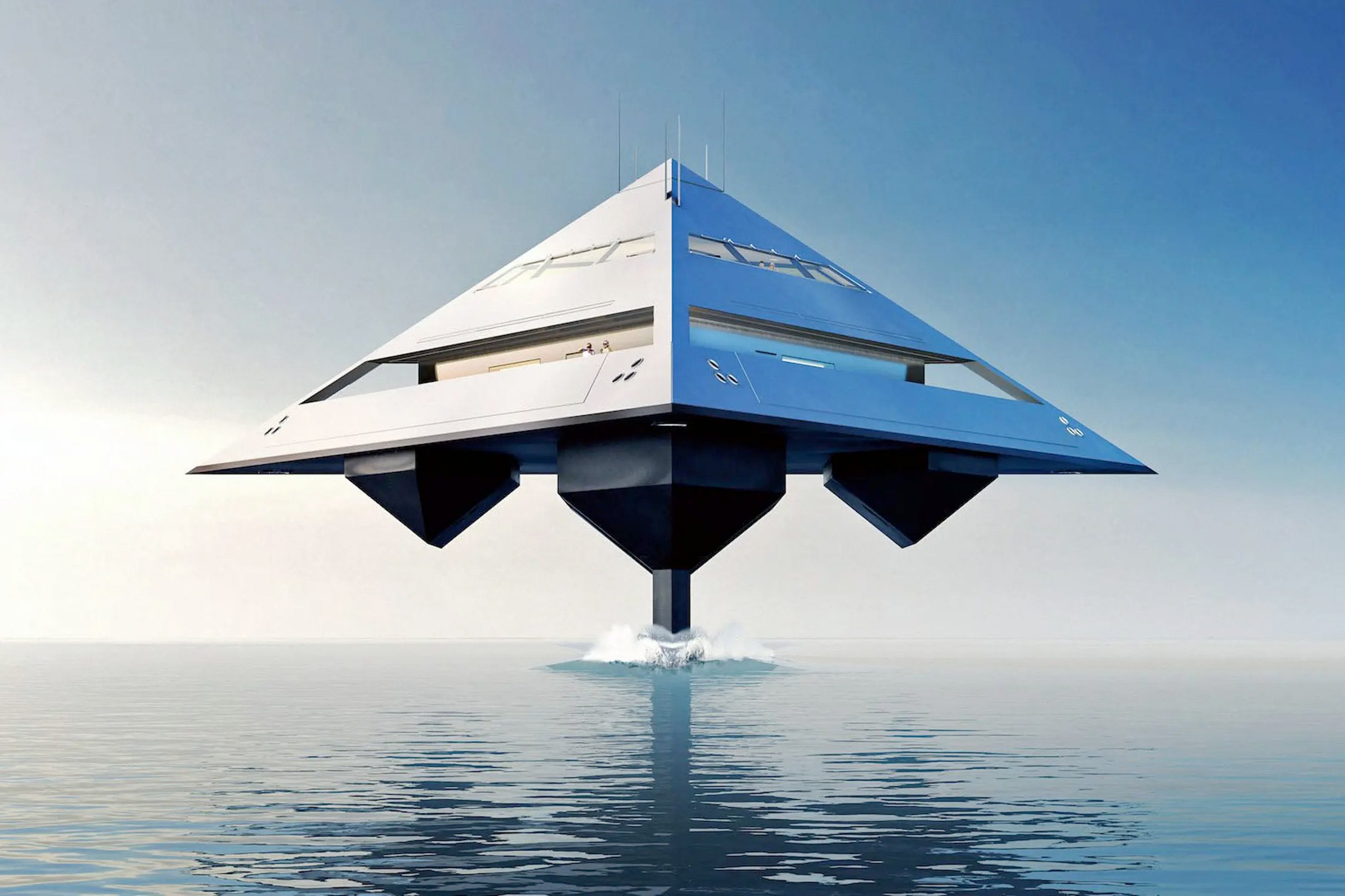
Hydrofoiling for speed
At the heart of the Tetra’s design is its Hydrofoil Small Waterplane Area Ship (HYSWAS) technology. A hydrofoil is a wing-like structure that extends below the surface of the water and lifts the vessel as it speeds up, reducing drag and allowing for faster travel. In the case of the Tetra, its central underwater “torpedo” hull, flanked by side-mounted hydrofoils, would lift the vessel above the waterline once it reaches a speed of 15 knots (17 mph or 27 km/h).
When fully hydrofoiling, the Tetra is expected to reach a top speed of 38 knots (44 mph or 71 km/h). While that may not sound particularly fast compared to traditional boats or planes, it’s quite impressive for a yacht of this size. The benefit of hydrofoiling is not just speed, though—it also provides a smoother, more efficient ride by reducing the amount of hull in contact with the water.
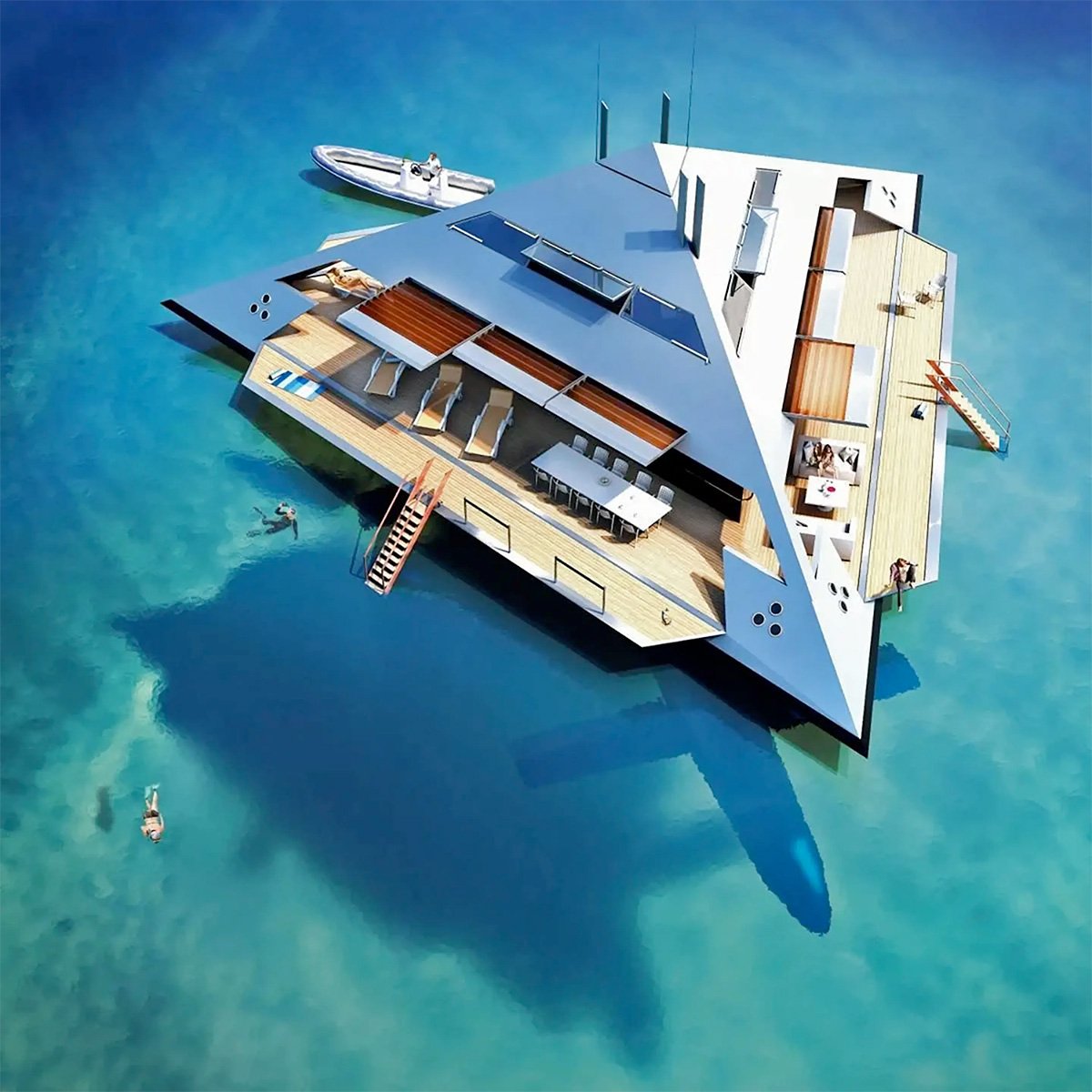
At low speeds, the Tetra would sail like a conventional yacht, resting on its three bat-like hulls with the hydrofoils partially retracted. This mode, while practical in open waters, comes with its own set of challenges. The yacht’s shape and size make it difficult to navigate shallow waters and traditional marinas, meaning that docking this pyramid-shaped vessel would require special facilities or anchor points far from shore.
The sci-fi connection: Is it Oblivion’s Tet?
For sci-fi fans, the comparisons to Oblivion’s Tet are hard to miss. In the movie, the Tet is a massive, pyramid-like alien space station hovering above Earth. It plays a key role in the film’s plot, serving as both a looming presence and a place where key characters are cloned and controlled. Interestingly, Schwinge’s Tetra, like the Tet, could be seen as a symbol of futuristic design—though thankfully, without the cloning or dystopian elements.
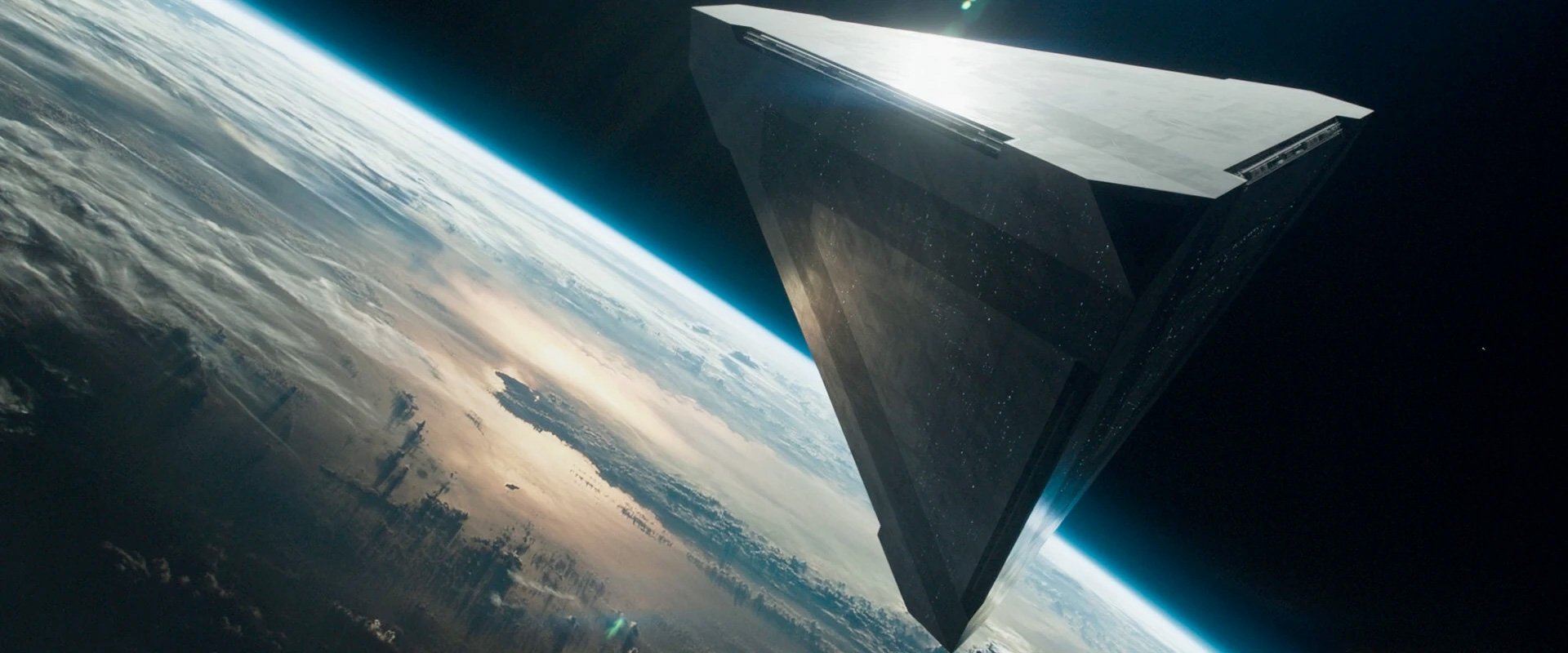
Schwinge’s yacht, however, was not designed for space, and it wouldn’t need Tom Cruise clones to pilot it. But it does feature some advanced aviation-inspired technology, particularly in its control systems. The yacht’s “fly-by-light” autopilot system would use fiber optics to transmit control signals, replacing traditional copper wiring with faster, lighter, and more reliable optical systems. Originally developed for fighter jets, this technology allows for precise control, helping the Tetra maintain balance and stability while foiling above the water. In rough seas, those milliseconds of faster reaction time could make the difference between a smooth ride and an overturned pyramid.
Long-distance travel: But where to park?
In terms of range, the Tetra also holds its own against more traditional yachts. Schwinge designed it with a 3,000 nautical mile cruising range (3,452 miles or 5,555 km), meaning it could easily sail from Monaco to the Caribbean without stopping for fuel. For reference, that’s about the distance from the French Riviera to Antigua in the Caribbean—a trip that would make for a pretty spectacular vacation.
However, this range brings up another practical challenge: where does one dock a yacht like this? Traditional marinas may not be well-suited to handle the Tetra’s unusual shape and deep draft. In fact, the very design that makes the Tetra stand out in open waters could become a significant inconvenience in more populated or shallow coastal areas.
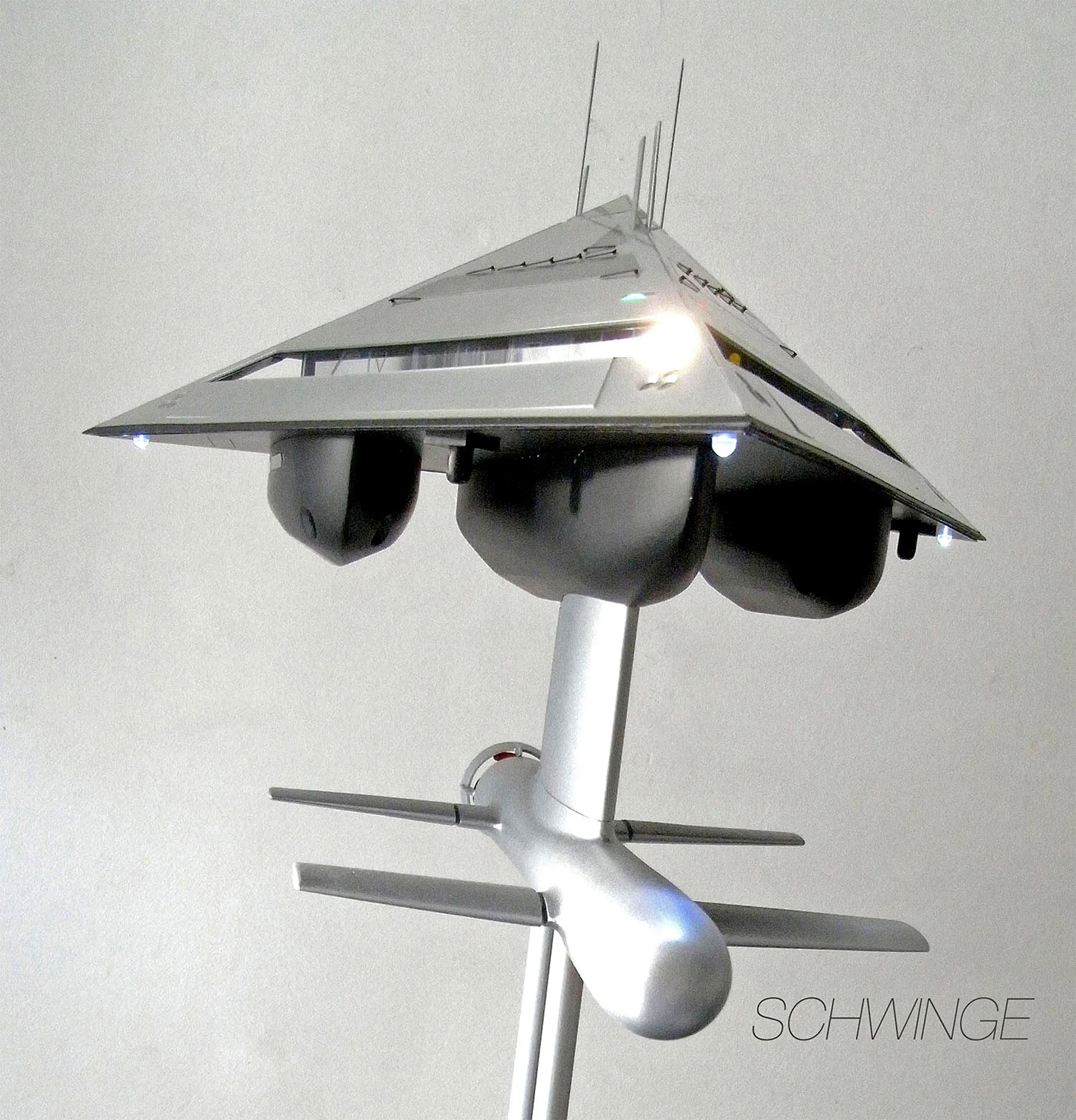
The Tetra’s journey: From concept to stagnation
When Schwinge first unveiled the Tetra in 2010, it generated a lot of excitement. By 2016, it even looked like the project was moving forward, with Marcel Müller from Inmainco Visionary Marine Management agreeing to help build the yacht. Müller, known for his expertise in carbon fiber technology and premium yachts, seemed like the perfect partner to bring the Tetra to life. But since then, progress has stalled, with no prototypes built and no further development announced.
The concept remains tantalizingly close to reality, but without a committed team to overcome the engineering challenges, it may never move beyond the planning stage. The collaboration with The Maritime Applied Physics Corporation (MAPC) in Baltimore, Maryland, suggests that work on the yacht’s propulsion system is still ongoing, but the details are vague. MAPC specializes in advanced naval craft and ocean engineering, and has worked extensively with the U.S. Department of Defense, which gives hope that the project hasn’t been abandoned entirely.
Is it worth building?
The biggest question remains: is the Tetrahedron Superyacht a feasible design, or is it destined to remain a concept? While the idea of a hydrofoiling pyramid at sea is undoubtedly intriguing, the practical and financial challenges are significant. Developing a vessel with such an advanced hydrofoiling system, combined with the cutting-edge fly-by-light technology, would likely be an expensive and complex undertaking.
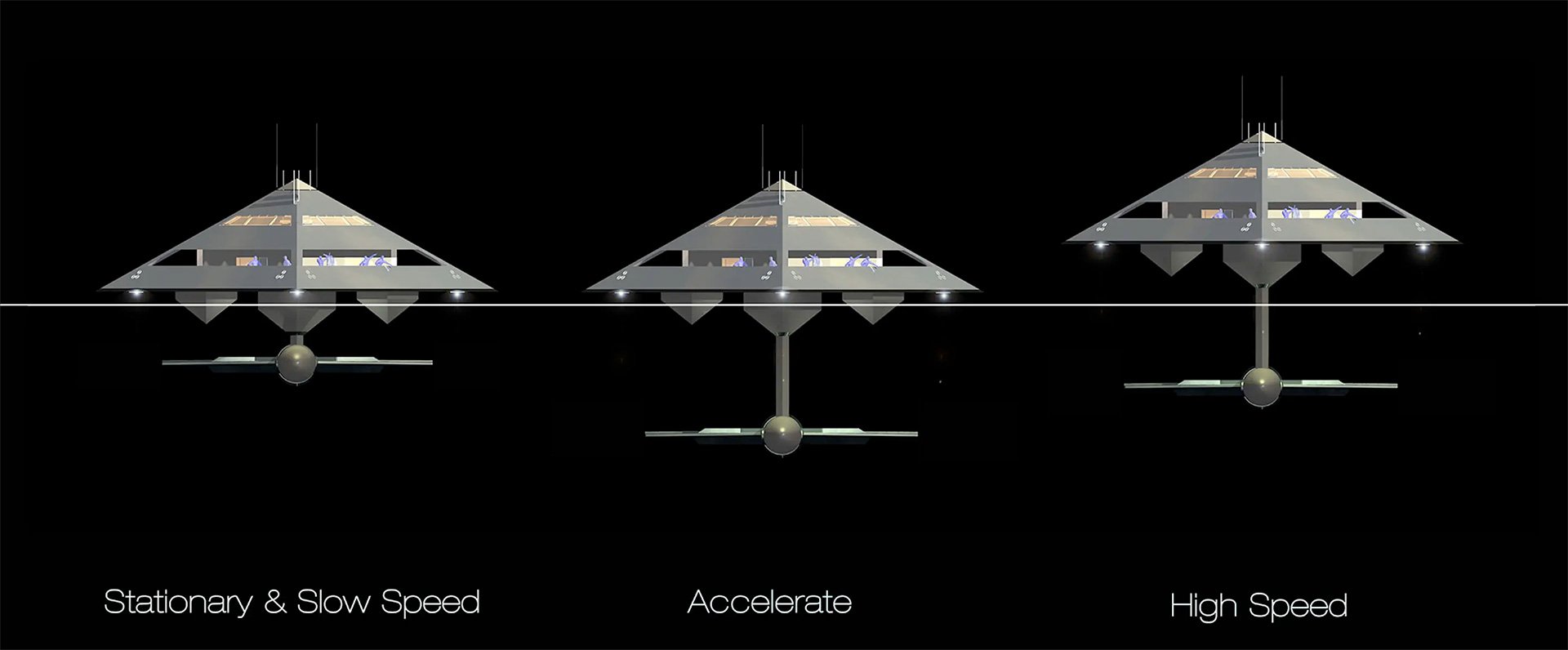
And for what? For the ultra-rich, who can afford to commission such a yacht, the appeal of owning a one-of-a-kind design like the Tetra may be outweighed by the convenience of owning a more traditional megayacht. After all, why invest in a floating pyramid with a limited market appeal when you can buy a gently used superyacht with a more practical design?
Conclusion: A concept stuck in time
The Tetrahedron Hydrofoiling Superyacht remains one of Jonathan Schwinge’s most ambitious and talked-about projects, but it may never see the light of day. While its design is undeniably innovative and visually striking, the technical and financial challenges involved in building and operating such a vessel have kept it from becoming a reality.
For now, the Tetra remains a concept—a fascinating “what if” that continues to capture imaginations, much like the fictional Tet from *Oblivion*. Perhaps one day, with the right backing and technological advances, Schwinge’s vision will sail the seas. Until then, we’ll have to settle for more conventional superyachts and dream about what could have been.
Source: Schwinge

